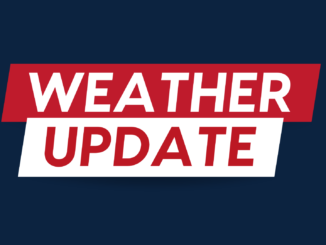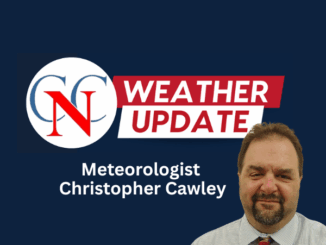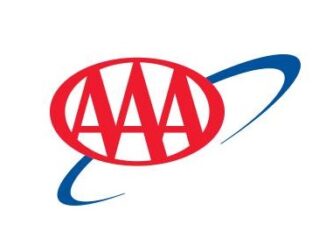
In the world of healthcare, professional liability coverage is an essential safeguard for providers. For ABA professionals, this coverage protects against legal and financial risks and supports the sustainability of their work with vulnerable populations.
According to Global Market Insights, the worldwide market for medical professional liability insurance was valued at USD 16.4 billion in 2024. The market is anticipated to grow to USD 46 billion in 2034, expanding at a CAGR of 10.8% from 2025 to 2034.
The increase is fueled by the growing number of medical malpractice claims, pushing healthcare providers to secure more robust coverage. Growing awareness and risk-management initiatives are also encouraging more professionals to proactively adopt insurance policies.
This article outlines the role of professional liability coverage in ABA insurance plans and why it is vital for practitioner and client protection.
What Professional Liability Coverage Protects
Professional liability coverage, a core component of ABA therapy insurance coverage, is essential financial protection against claims arising from your professional services. This insurance covers defense costs, legal fees, and settlements if you are found liable for professional negligence. Unlike general liability, it specifically addresses errors, omissions, or negligent acts in the delivery of ABA services.
For ABA providers, exposures are numerous. According to Olson Duncan, in-home client services put staff in an uncontrolled environment, which can present difficulties and potential claims. The coverage extends to allegations of improper treatment, failure to obtain informed consent, inadequate supervision, or claims of emotional harm.
Even baseless allegations require a defense, and legal costs can be crippling without insurance. This policy helps you mount a proper defense and often includes cost-effective coverage options and free risk-management support.
Coverage Limits and Policy Structure
 Selecting professional liability coverage for ABA practice requires understanding how policy limits are structured. Policies include a per-claim limit for each incident and an aggregate limit for the total amount available during the policy period. These limits typically range from $250,000 to over $2 million, with many policies offering $1 million per claim and $1 million aggregate.
Selecting professional liability coverage for ABA practice requires understanding how policy limits are structured. Policies include a per-claim limit for each incident and an aggregate limit for the total amount available during the policy period. These limits typically range from $250,000 to over $2 million, with many policies offering $1 million per claim and $1 million aggregate.
According to Investopedia, annual costs usually range from $600 to $1,200. Pricing depends on factors such as business type, geographic location, years in practice, claims history, and number of employees. ABA therapists must assess their needs based on client volume, case complexity, and supervision responsibilities, since overseeing behavior technicians increases exposure.
Many practitioners choose individual policies for consistent protection, especially when changing employers, as the premium is far lower than the potential cost of legal defense.
Claims-Made vs. Occurrence Policies
A claims-made policy provides coverage only for claims reported during the policy period, and the incident must also occur while the policy is active. An occurrence policy, by contrast, covers the event when it occurs, meaning the date the claim is reported is irrelevant. Therefore, this policy type eliminates the necessity of purchasing expensive tail coverage.
For ABA therapists, this distinction has important long-term implications. Claims-made policies are more common and require uninterrupted coverage over time. When retiring or changing insurers, therapists often need tail coverage, also known as an Extended Reporting Period, which protects against claims filed after the policy ends.
U.S. News notes that tail insurance is only available for claims-made policies. It may extend protection from 30 days to several years, with some policies offering unlimited duration. Because ABA-related issues may surface long after treatment, understanding claims-made, occurrence, and tail coverage options is crucial to maintaining uninterrupted protection.
Exclusions and Coverage Gaps in ABA Policies
Professional liability policies are not all-encompassing, making it vital to understand exclusions and potential coverage gaps. Standard exclusions include intentional misconduct, criminal acts, bodily injury (covered by general liability), and claims preceding the retroactive date.
For ABA therapists, specific gaps require vigilance. For instance, ensure your policy explicitly covers telehealth services across state lines and provides vicarious liability coverage if you supervise behavior technicians. Also, confirm that consultation or expert testimony is included if you perform these services.
Billing issues can also lead to disputes that fall outside standard liability protection. A widely reported case cited by Yahoo! involved a conflict between Publix and ABA Cares over unpaid therapy bills. Publix later countersued, alleging that ABA Cares engaged in a scheme to defraud its health plan. This example highlights how financial and reimbursement disagreements may not be covered by professional liability policies.
Carefully reviewing policy language and securing supplemental endorsements when needed is critical for addressing the unique risks within ABA practice.
Mandatory Coverage and Credentialing Requirements
Professional liability insurance requirements for ABA therapists differ by state, workplace, and credentialing organization. While many states do not legally mandate malpractice insurance for licensed behavior analysts, practical and professional expectations often make coverage unavoidable.
The Behavior Analyst Certification Board (BACB) does not require insurance for certification, but strongly recommends it as part of ethical practice. Some state licensure boards also outline specific coverage expectations, making it essential to review local regulations.
Beyond legal obligations, most employers require therapists to carry professional liability insurance, even when institutional coverage is provided. Insurance panels, managed care organizations, and school districts commonly require evidence of active coverage before granting credentialing or contract approval.
Maintaining your own policy also signals professionalism and protects against gaps in employer-provided plans. Given the modest cost of premiums compared to the financial risks of a lawsuit, liability insurance is a critical investment in financial security.
Selecting the Right Coverage for Your Practice
Choosing the right professional liability coverage requires evaluating your practice setup and identifying areas of potential risk. Start by assessing key aspects of your work, including:
- Employment status: employee, contractor, or business owner
- Practice setting: clinic, school, home-based, or telehealth
- Client population: age, behavior severity, or specialized needs
- Supervision duties: oversight of RBTs or technicians
- Geographic locations: multiple states or jurisdictions
Once your needs are clear, compare policies by reviewing coverage limits, retroactive dates, and whether you have “consent to settle” rights. Also, consider premium costs in relation to the protection offered.
It’s helpful to work with brokers experienced in healthcare or ABA-specific liability insurance. Always read policy terms carefully and seek guidance from trusted colleagues or legal advisors to ensure you’re fully protected.
Frequently Asked Questions
Do I need individual professional liability insurance if my employer provides coverage?
Yes, individual coverage is strongly recommended even with employer-provided insurance. Employer policies may have coverage gaps, might not protect you after employment ends, and may prioritize the organization’s interests over yours. In addition, these policies typically do not cover outside professional activities such as consulting. Individual policies ensure continuous protection regardless of employment changes and provide defense representation solely focused on your interests throughout your career.
What is the difference between nose and tail coverage?
Nose coverage applies when switching insurers. It extends your new policy’s protection backward to cover incidents from your previous policy. Tail coverage applies when a claims-made policy ends. It extends your old policy forward to cover future claims for past incidents. Essentially, nose covers prior acts, tail covers post-policy claims.
What should I do if a client threatens to file a complaint or lawsuit?
Immediately notify your professional liability insurance carrier, even if no formal claim exists yet. Document all interactions and treatment provided, but avoid discussing the situation with the client beyond necessary communication. Do not admit fault or alter records. Consult your insurance company’s legal resources and follow their guidance. Timely notification is crucial, as delayed reporting can jeopardize coverage under claims-made policies.
Professional liability insurance is essential for ABA therapists seeking long-term security, ethical practice, and financial protection. By understanding policy types, coverage limits, exclusions, and credentialing requirements, practitioners can make informed decisions that safeguard their careers. Investing in the right coverage ensures continuity of care, professional stability, and peace of mind.
(Contributed Content)
































Be the first to comment